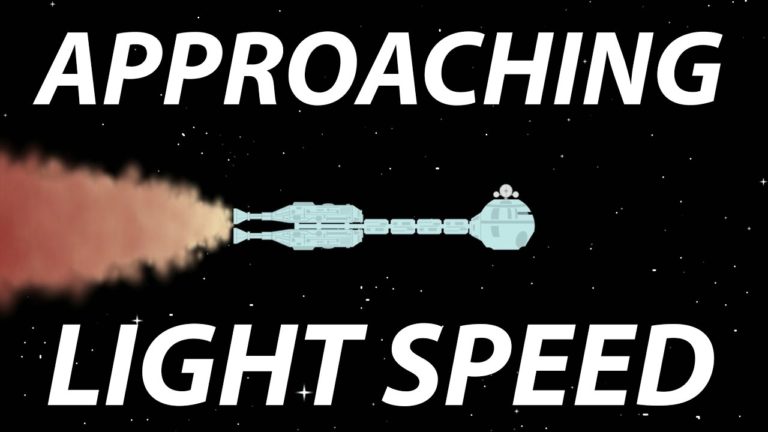Interstellar Travel: Approaching Light Speed
What is interstellar travel?
Interstellar travel refers to the currently theoretical idea of interstellar probes or crewed spacecraft moving between stars or planetary systems in a galaxy. Interstellar travel would be much more difficult than interplanetary spaceflight. Whereas the distances between the planets in the Solar System are less than 30 astronomical units (AU), the distances between stars are typically hundreds of thousands of AU, and usually expressed in light-years. Because of the vastness of those distances, practical interstellar travel based on known physics would need to occur at a high percentage of the speed of light; even so, travel times would be long, at least decades and perhaps millennia or longer.
The speeds required for interstellar travel in a human lifetime far exceed what current methods of space travel can provide. Even with a hypothetically perfectly efficient propulsion system, the kinetic energy corresponding to those speeds is enormous by today’s standards of energy development. Moreover, collisions by the spacecraft with cosmic dust and gas can be very dangerous for both passengers and the spacecraft itself.
A number of strategies have been proposed to deal with these problems, ranging from giant arks that would carry entire societies and ecosystems, to microscopic space probes. Many different spacecraft propulsion systems have been proposed to give spacecraft the required speeds, including nuclear propulsion, beam-powered propulsion, and methods based on speculative physics.
For both crewed and uncrewed interstellar travel, considerable technological and economic challenges need to be met. Even the most optimistic views about interstellar travel see it as only being feasible decades from now. However, in spite of the challenges, if or when interstellar travel is realized, a wide range of scientific benefits is expected.
Most interstellar travel concepts require a developed space logistics system capable of moving millions of tonnes to a construction / operating location, and most would require gigawatt-scale power for construction or power (such as Star Wisp or Light Sail type concepts). Such a system could grow organically if space-based solar power became a significant component of Earth’s energy mix. Consumer demand for a multi-terawatt system would create the necessary multi-million ton/year logistical system.
Is interstellar travel doomed to remain in the realm of science fiction? Sticking to near future space propulsion only, how close can we get to the speed of light? This video looks at the current spacecraft speed records with Apollo 10 holding the record for the fastest manned spacecraft, New Horizons probe for the fastest Earth escape velocity and the Helios probes for the fastest heliocentric velocity. But Solar Probe Plus will beat that when it launches in 2018.
While Voyager 1 doesn’t set any speed records, it was the first spacecraft to leave the solar system, so therefore the fastest solar system escape velocity by default. For beating these speeds, this video explores what is possible in the near future only, so no antimatter, Alcubierre drives (warp), ramjets, etc… The EM drive is left out until it’s proven with actual reproducible results in space. Project Daedalus and the updated Project Icarus represent sound concepts for fusion spacecraft.
IKAROS was the first successful demonstration of solar sail technology but hopefully the planetary society is not far behind with their LightSail cubsat (not covered in this video).
But what appears to have the most potential to reach the nearest star to our own, Proxima Centauri and it’s newly discovered planet Proxima b is Breakthrough Starshot. Thousands of super lightweight laser sail nanocraft will be launched into space then the light beamer, a ground based laser array will propel these spacecraft to 20% light speed within minutes.
Do not forget to share your opinion with us to provide you with the best posts !




0 Comments